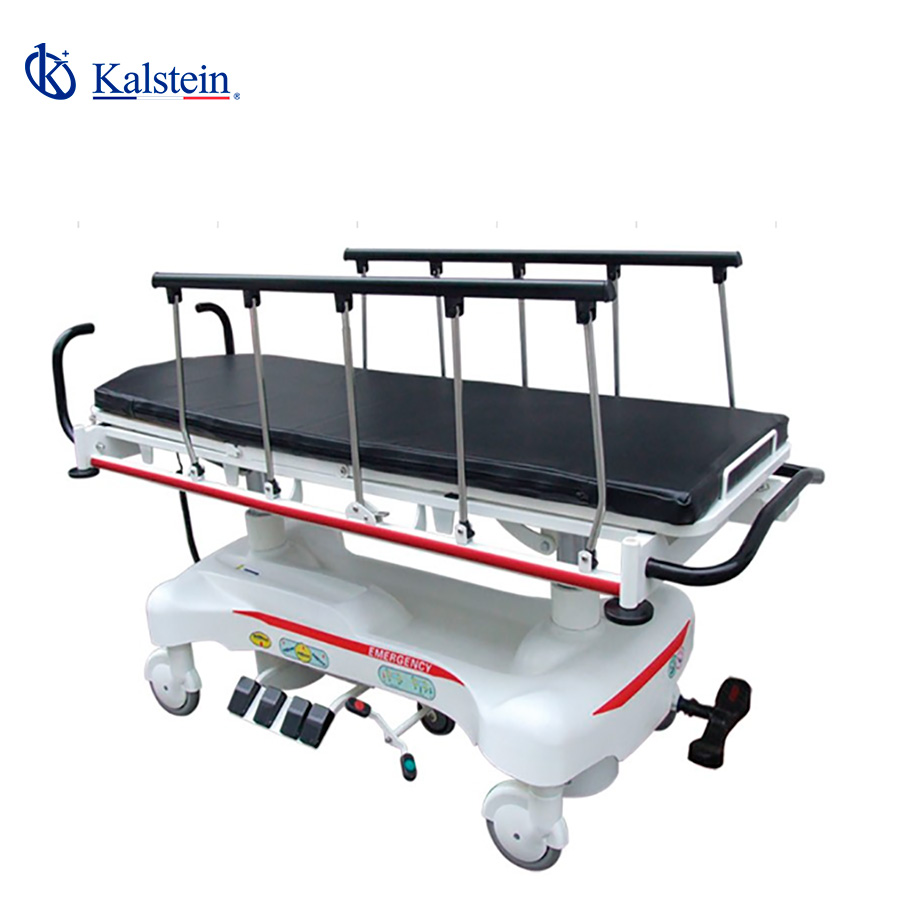Medical transport stretchers are an essential component in healthcare, providing a critical solution for the safe and efficient transportation of patients. In this article, we will explore in detail what makes top-quality stretchers the best choice for medical transport, analyzing their design, performance, and key advantages.
With a focus on improved clinical outcomes and medical precision, our goal is to offer a comprehensive guide to help you select the ideal stretcher for your needs.
If you’re seeking a blend of innovation and quality, you’ve come to the right place. At https://kalstein.africa/category-product/medical-line/medical-transfer-stretcher/ we offer you the luxury to explore our exclusive catalog of laboratory equipment. We manufacture each piece of equipment with a level of excellence. Our intuitive and agile online shopping channels are designed for your convenience, ensuring the friendliest prices. Don’t hesitate any longer, we bring science to life, it’s time to become part of our community. https://kalstein.africa/
Ergonomic and Functional Design
The design of a medical transport stretcher is crucial for ensuring patient comfort and safety. Top-quality stretchers are designed with advanced ergonomics that facilitate use for both healthcare professionals and patients. These stretchers often feature adjustable backrests, padded cushions, and side supports that provide optimal adjustment during transport.
The material used in the construction of these stretchers also plays a critical role. The best models are made from lightweight yet durable materials such as aluminum or stainless steel, which not only offer durability but also ease of handling. The structure must be robust enough to support the patient’s weight and movements during transport, while also being easily foldable and storable.
Safety and Stability Systems
Patient safety during transport is a top priority. Top-quality stretchers are equipped with various safety systems that ensure patient stability and reduce the risk of falls or injuries. These systems include adjustable safety belts, wheel brakes, and locking mechanisms that prevent unwanted movement.
Additionally, many high-end stretchers feature extra elements such as maximum load indicators and quick-adjust mechanisms to adapt to different environments and transport needs. These features are essential for maintaining medical precision and ensuring the patient is fully secure during transit.
Patient Comfort
Patient comfort is a key concern when choosing a transport stretcher. Top-quality stretchers are designed with a focus on comfort, using cushioned and breathable materials that reduce the risk of pressure ulcers and other complications. Adjustable backrests and reclining headrests allow the stretcher to be adapted to the most comfortable position for the patient.
Furthermore, ergonomic design not only seeks comfort but also aims to reduce physical stress on the patient during transport. A well-designed stretcher can make a significant difference in the patient’s experience and contribute to improved clinical outcomes by ensuring a less traumatic and more comfortable transport.
Ease of Handling and Transport
Ease of handling is a critical feature in transport stretchers. The best stretchers are designed to be easily operated by medical staff, even in high-pressure situations. Features such as swivel wheels, foot brakes, and intuitive adjustment mechanisms allow for precise and efficient control during transport.
The weight of the stretcher is also an important factor. Top-quality stretchers are designed to be lightweight without sacrificing strength, making them easier to maneuver and transport. This is especially important in emergency settings where every second counts, and an easy-to-handle stretcher can make a significant difference.
Durability and Maintenance
Durability is a crucial feature in medical transport stretchers, as they must withstand frequent use and demanding conditions. Top-quality stretchers are made from high-quality materials that ensure a long lifespan and resistance to corrosion, stains, and wear. Regular maintenance is essential to extend the life of the stretcher and ensure it is always in optimal condition for use.
Modern stretchers are designed for easy maintenance, with removable components and easy-to-clean surfaces. This not only ensures greater durability but also contributes to hygiene and infection prevention, which is crucial in medical environments.
Comparison with Competitors
To provide a comprehensive view, it’s helpful to compare top-quality stretchers with other options available in the market. For example, Kalstein’s medical transport stretchers stand out for their robustness and innovative design compared to other models. Analyzing products from competitors such as Proheal Products, Avante Health, and Abuelo Cómodo, it is clear that Kalstein stretchers offer additional features that enhance medical precision and clinical outcomes.
Kalstein stretchers include advanced features such as improved suspension systems and customization options that are not always available in other models. These elements can make a significant difference in transport efficiency and patient experience.
Case Study
To illustrate the benefits of a top-quality medical transport stretcher, consider a case study of a hospital that implemented an advanced Kalstein stretcher. The hospital reported a 30% improvement in patient transport efficiency, reducing response times in emergencies and enhancing patient satisfaction. Testimonials from medical staff highlighted the ease of handling and additional safety provided by the stretcher, contributing to improved clinical outcomes and greater precision in emergency treatment.
In summary, top-quality medical transport stretchers offer a unique combination of ergonomic design, safety systems, patient comfort, ease of handling, durability, and advanced features. Choosing the right stretcher can have a significant impact on medical transport efficiency and clinical outcomes. With an informed selection, healthcare professionals can ensure safer and more effective transport, improving the quality of care and patient experience.

